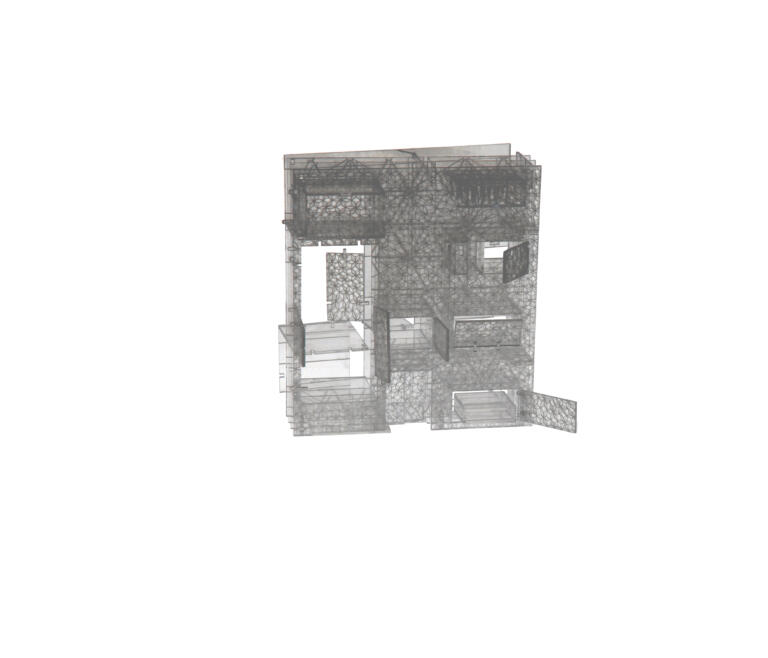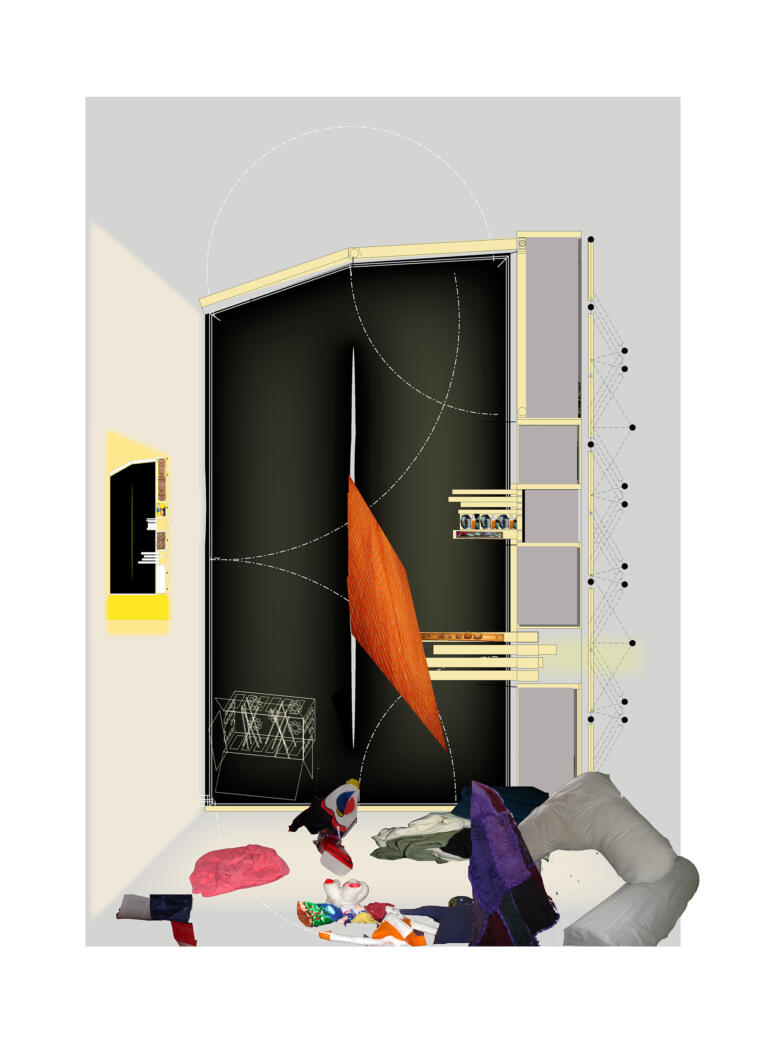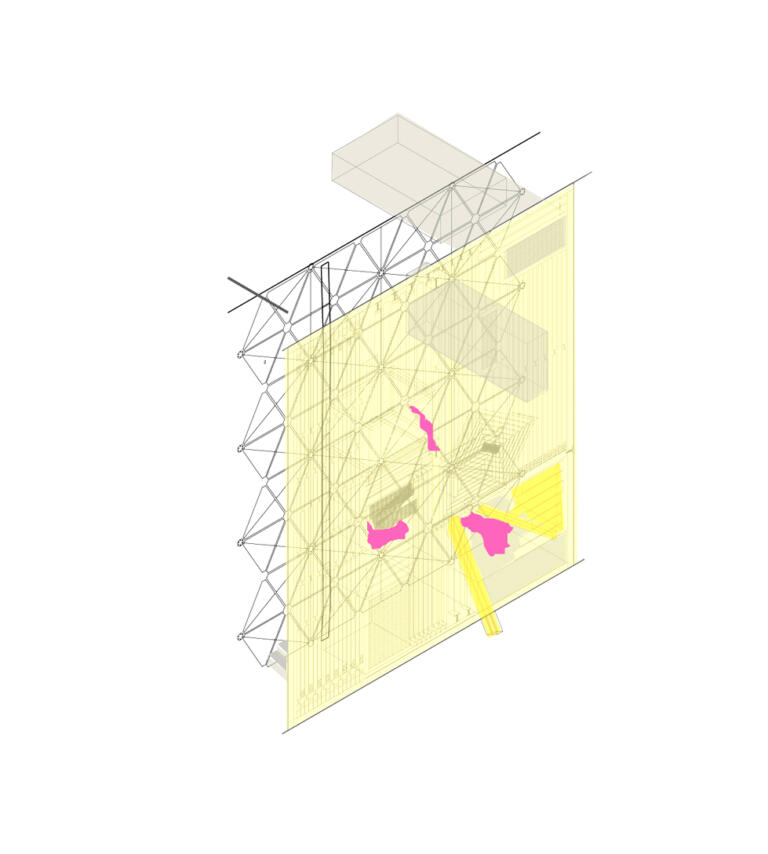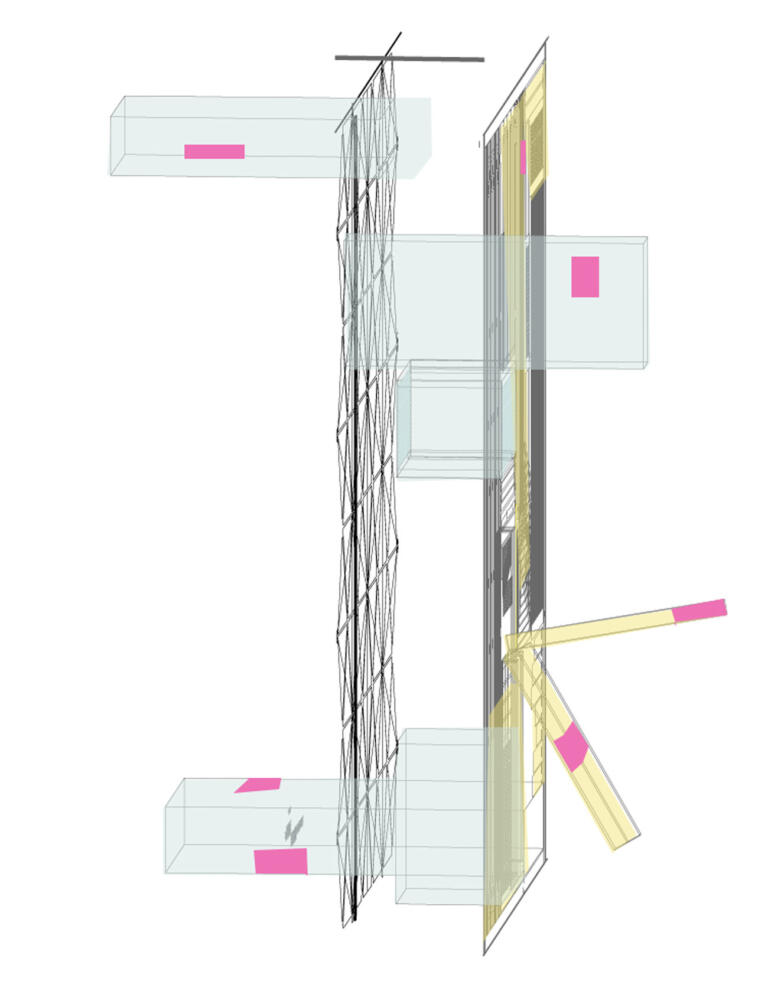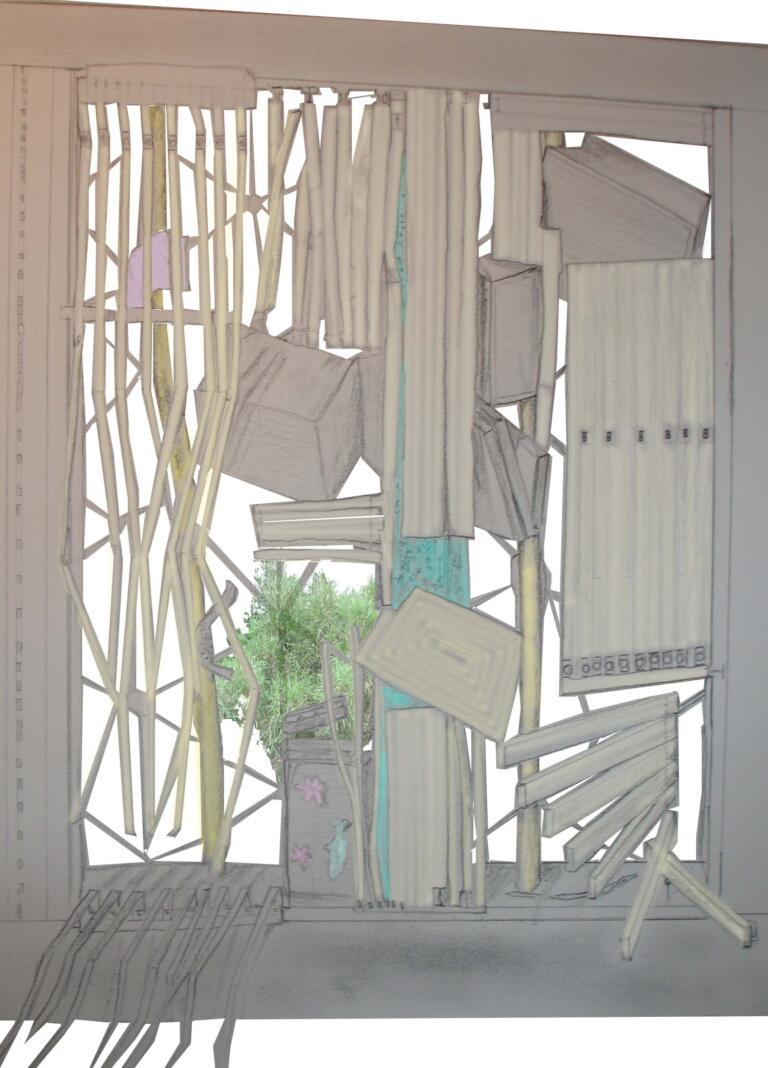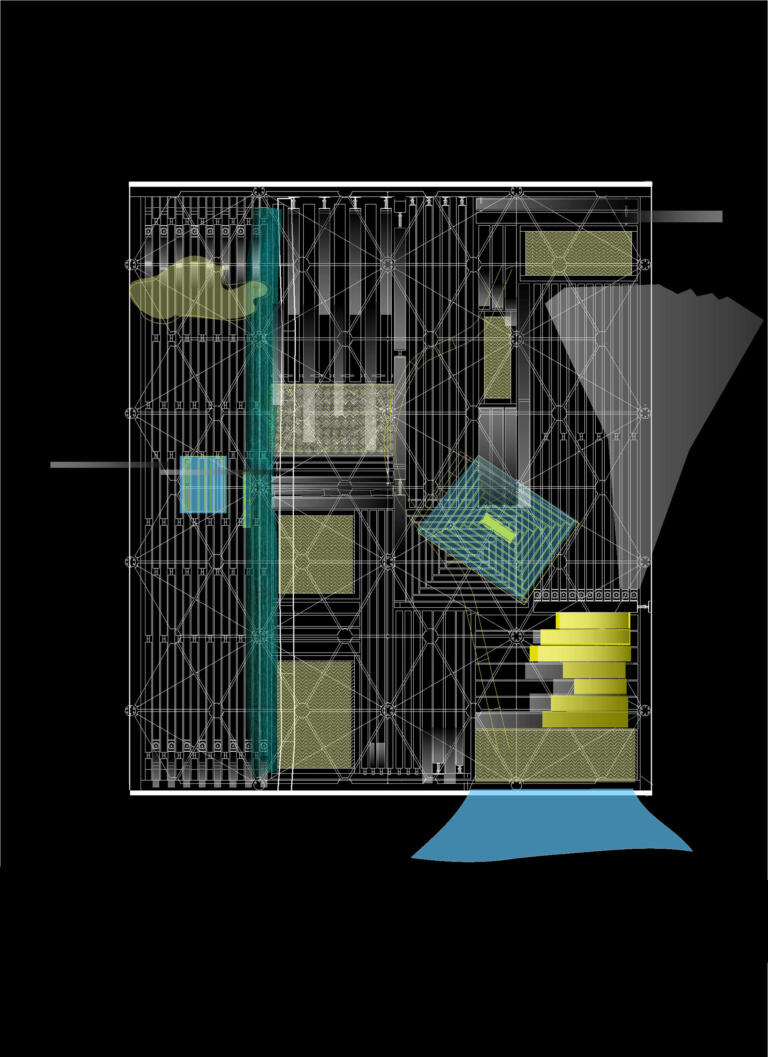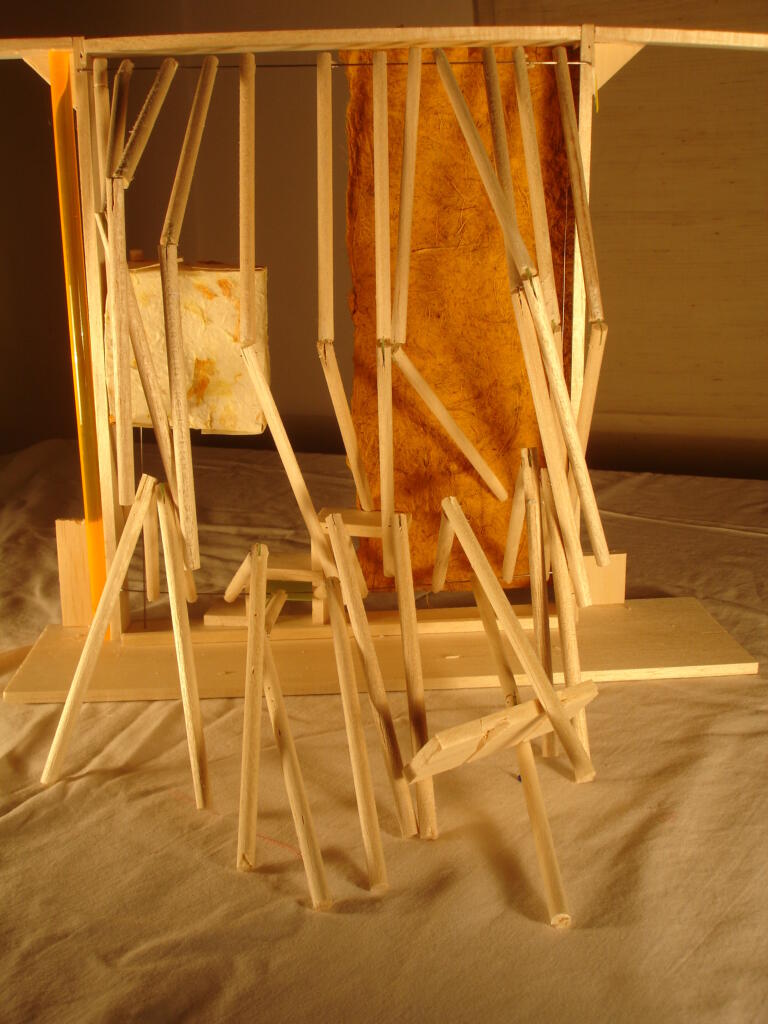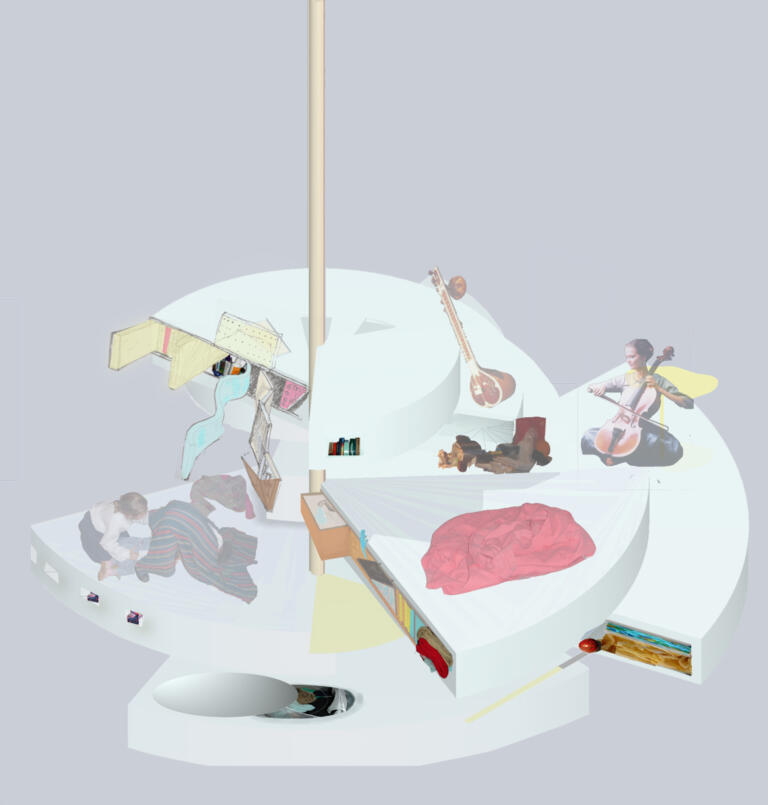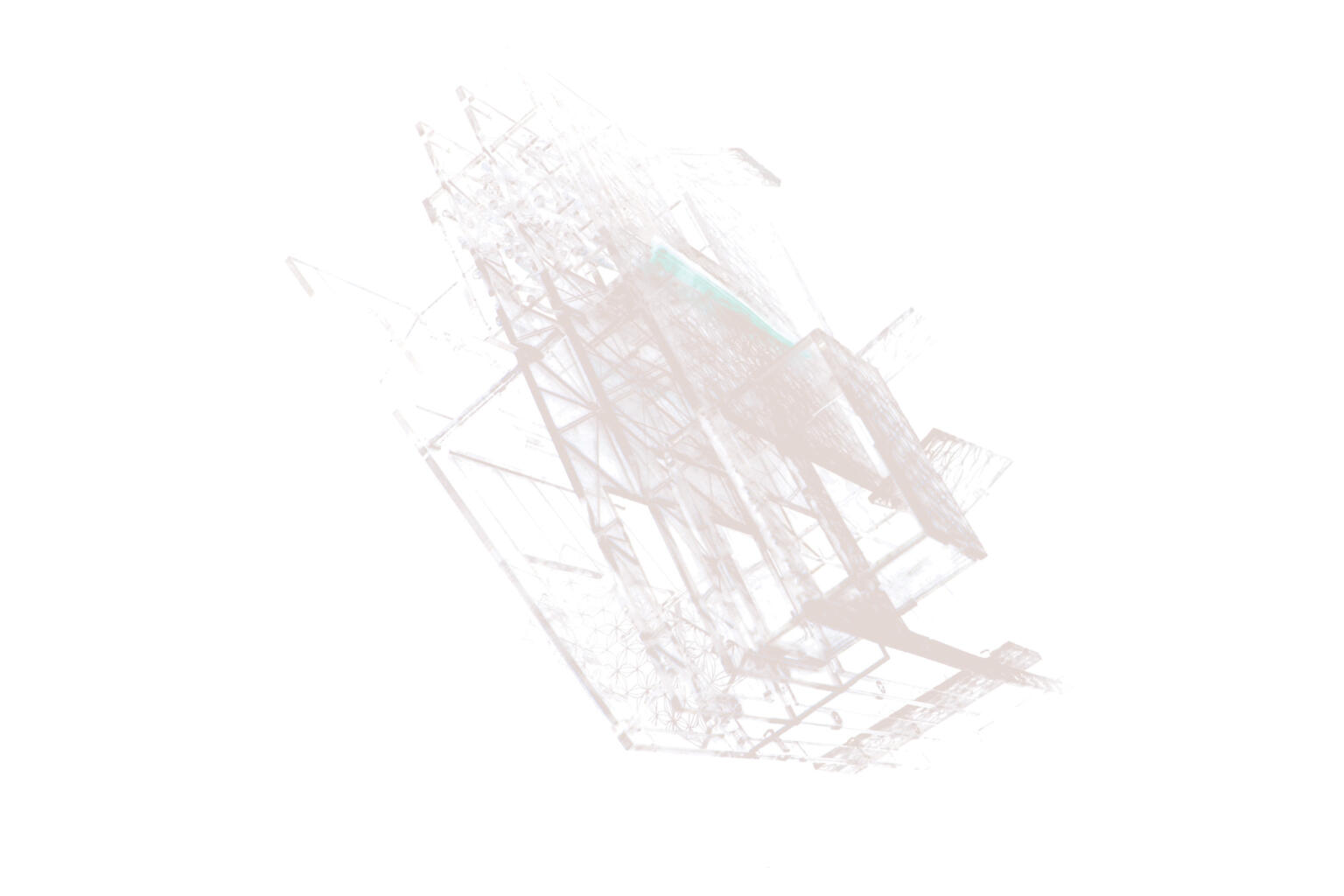
House for two musicians: Saskia and Shubhendra Rao.
This design is a series of explorations for a wall in the large living room of two now famous musicians, Saskia Rao de Haas and Shubhendra Rao, in a two-bedroom apartment in New Delhi. The design of the wall is inspired by practical needs as well as a loose interpretation of the rhythms and changes of the raga. The musicians perform and compose North Indian classical music absorbing other musical languages in their repertoire.
‘Indian music is known as one of the oldest classical music traditions in the world. The music has a close connection with classical Indian aesthetics, which identifies different rasa’s or which can predominate a work of art, either visual or performing.’
Pandit Shubhendra Rao, a protégé of Ravi Shankar, plays Sitar and Maestro Saskia Rao learned to play the cello in the Netherlands and play on her patented Indian Cello, which she introduced into Indian Classical music. Together they compose and play for audiences together as well as individually. When at home, they practice, eat, entertain, and perform and look after their small son who is also a musician. Sometimes they perform for small audiences in their home and sometimes practice with larger groups of musicians. For this they need a performance space.
The design is a flexible wall that could split the large living room into two rooms. The wall would open for performances and become a stage, would open for meals, but close if two rooms were needed. The wall could follow an important aspect of North Indian music, the Raga.
‘A raga is characterized not only by its tonal material but also by the predominance of certain notes, the time of day it should be performed and the style of performance. Raga comes from the Sanskrit word Ranga which means ‘that which colours the mind.’
The new wall is responsive to the daily routines of the musicians as well as the time of day. It is both symbolic and practical and perhaps embodies an idea of home. As they travel it was decided that part of the wall could be taken on journeys: Cut-outs in the wall for a cello and sitar become holes in the wall when taken out, so absence is felt. The wall opens, tilts, or folds depending on what is needed. The middle section opens and forms a stage where the audience or the performers can sit and play or that can be used for other daily activities.
‘I was drawn to the improvising nature of Indian music. Improvising, but in a strong framework. Also, the slow progression of a performance; literally each note slowly unfolds itself to you and tells its own story. The attention to detail, so much so that minute differences in intonation, embellishments or rhythm present a completely different picture.’
The wall would invite improvisation by its users within a fixed structure. Living and improvising life within a fixed structure has unwittingly become an important part of our architecture.
